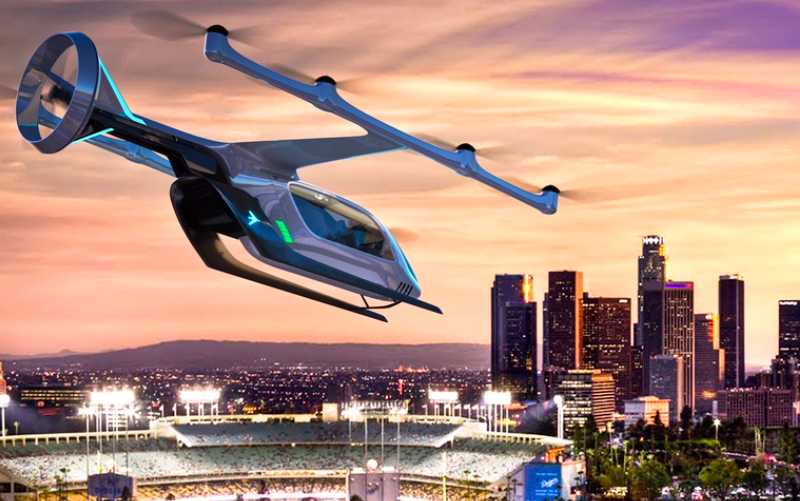eVTOL tomorrow never comes

Time always slows down when you are waiting for a taxi. In 2016 Uber published its Elevate air taxi white paper and announced its aviation division. It confidently predicted fleets of air taxis ferrying passengers around Los Angeles, Dallas and Melbourne, Australia. By 2023. Even if you have not been to any of these cities lately, you will know that this has not happened.
Volocopter, a German air taxi operator, had announced plans to commercially operate five one-pilot, one-passenger electric Vertical Take-off and Landing (eVTOL) aircraft at next month’s Paris Olympics. It is now waiting for temporary approval to perform a few demonstration flights.
The mood amongst eVTOL manufacturers has shifted dramatically in the last few years. At last week’s Revolution Aero London conference just 35% of delegates expected to see profitable commercial passenger services in the next four years, with 43% expecting it to take between five and 10 years. Some 22% believed it could never happen.
This was an audience of people who had come together at a conference focused on the future of aviation and are pretty good at forecasting. In 2018, at the first Revolution Aero event, 61% went against Uber and said that commercial operations would not take place until between 2025 and 2030.
But it would be a mistake to dismiss VTOLs. Joshua Ng, a director at Alton Aviation Consultancy, estimates that $12bn has been invested in this sector. Some 85% of it has gone to OEMs – and this does not include internal research and development spend at aircraft manufacturers including Airbus, Leonardo and Textron.
“We are now in the reality part of the hype cycle,” said Sergio Cecutta, founder, SMG Consulting. “It is a double-edged sword. One piece is the fact these aircraft are hard to develop, especially to certify. The other is that it takes a lot of money. Not $1bn, but $1.5bn to $2bn.” Back in 2018 many OEMs thought they could certificate an aircraft for $500m.
Some of the new aircraft manufacturers used SPACs to go public. They are now nervously looking for more funding. Brian Flynn, founding partner at DiamondStream Partners, expects to see two types of investment this year. “One is where the company is performing well according to their targets and those companies are finding the funding that creates attractive valuations,” he said. “The other type of deal is restructurings and those are more fraught with peril at any valuation.”
Aircraft manufacturers are also increasingly looking to partner with established business aviation companies – both to sell and operate aircraft. This year alone, leading eVTOL developers such as Joby, Archer and Beta Technologies have announced deals with companies including Signature Aviation and Clay Lacy Aviation. Archer’s agreement with Signature involves plans to electrify FBO terminals by as early as 2025 using Beta’s charging infrastructure. Joby and Clay Lacy are working together to prepare FBOs in Southern California for the arrival of eVTOL operations.
“You won’t see these aircraft go into Part 121 – they will operate under Part 135, which has been our centrepiece as an industry,” says Chris Rocheleau, chief operating officer, National Business Aviation Association (NBAA). “There has been a lot of news coverage about these partnerships with United, Delta, American etc,” he adds. “But the short of it is that the regulatory framework that will enable AAM is Part 135, and that is business aviation oriented.”
Bristow, one of the world’s largest helicopter operators, has placed orders with several manufacturers and is confident that there is an early market for cargo. It wants manufacturers and operators to focus on safety and not rush ahead. “If you got on an airplane to get here today you were benefiting from 120 years of operations and evolution of safety,” Stepanek told the Revolution.Aero audience. “And even today with modern advanced aircraft we are still seeing evolutionary problems. That is what we need to focus on. How do we take this revolutionary technology and apply evolutionary learnings?”
As well as Airbus and Embraer, it is worth watching car makers. The four largest automotive manufacturers – Volkswagen, Stellantis (Archer), Toyota (Joby) and Hyundai (Supernal) – have all invested in eVTOLs.
VTOLs will start delivering in the next five years. But it will take longer to become a serious market. In 1926, Henry Ford announced his motor company’s most ambitious launch: the Ford Flivver. Ford predicted that everyone would have flying cars by the 1930s. He may be within a century of being right.
Subscribe to our free newsletter
For more opinions from Corporate Jet Investor, subscribe to our One Minute Week newsletter.







